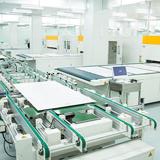

The working principle of a fully automatic screen printing machine: The printing plate transfers ink holes by pressure. According to its layout, printer type, ink properties and substrate type, substrates can be divided into multiple types. There are several other printing methods for the automatic screen printing machine? Today I will introduce to you:
1. Paper-based printing: small lithographic printing using paper as the printing plate material.
2. Transfer: A printing method in which the ink is printed on a medium first, and then transferred from the medium to the substrate.
3. Transcription printing: manual printing wax paper mimeograph.
4. Lithography: Lithography for short. A direct lithography process that uses stone as a printing plate.
5. Copper-zinc plate printing: also known as letterpress printing. Use copper plate or zinc plate as printing method of printing plate.
6. Resin plate printing: Use resin, nylon, etc. as a printing method for printing plates.
7. Woodcut watermark: also known as woodcut watermark. The screen printing equipment uses a stainless steel screen with good conductivity. The static electricity between the positive electrode plate and the negative electrode plate drives the ink through the through holes of the printing plate and attaches to the surface of the substrate, which is pressureless printing. The shape of the screen printer manufacturer's machine varies with the substrate, but it usually includes a substrate input part, a printing part, an ink fixing and drying part, and a substrate collecting part. The printing section is composed of a screen printing plate, an electrode plate and a high voltage generator. The traditional method is to engrave the production drawings into several printing plates, and then print them with water-soluble color materials.
8. Lightweight printing: also known as office printing system. A printing system using phototypesetting, small offset printing presses and small binding machines.
9. Network printing: The so-called special printing refers to products that cannot be printed by conventional equipment and technology through special equipment and special technology.
10. Collo printing: also known as glass printing. Cover the photosensitive layer with a thick glass material, and use negative exposure to form different water absorption rates. Printing uses the principle of mutual exclusion of oil and water.
Tel:15158365810
HTML:www.mysyqc.com
Add:No.185, bridge 3 road, xiaoqiaotou village, qiaotou town, cixi city